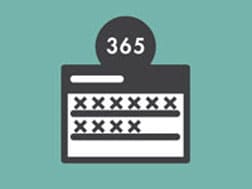Healthcare Respiratory Protection Resources
Fit Testing
NIOSH Documents
Hospital Respiratory Protection Program Toolkit (2015)
This toolkit was developed to assist hospitals in developing and implementing effective respiratory protection programs, with an emphasis on preventing the transmission of aerosol transmissible diseases (ATDs) to healthcare personnel.
Healthcare personnel are paid and unpaid persons who provide patient care in a healthcare setting or support the delivery of healthcare by providing clerical, dietary, housekeeping, engineering, security, or maintenance services. Healthcare personnel may potentially be exposed to ATD pathogens. Aerosols are particles or droplets suspended in air. ATDs are diseases transmitted when infectious agents, which are suspended or present in particles or droplets, contact the mucous membranes or are inhaled.
Implementing Hospital Respiratory Protection Programs: Strategies from the Field (2015)
Protecting workers from exposure to all types of respiratory hazards is an important issue for hospitals and other healthcare organizations. In order to address this often overlooked danger, The Joint Commission and Centers for Disease Control and Prevention (CDC), National Institute for Occupational Safety and Health (NIOSH), National Personal Protective Technology Laboratory (NPPTL) have collaborated to develop a new educational monograph designed to assist hospitals in implementing their respiratory protection programs (RPPs).
Infographics

Summary of Respiration Fit Test Requirements (2015)
Infographic explaining who needs to get fit tested, how to get fit tested, and the required follow up.
PDF [1,123 KB], Image [962 KB]

Facial Hairstyles and Filtering Facepiece Respirators (2017)
Infographic showcasing acceptable facial hairstyles for workers who wear tight-fitting respirators.
PDF [PDF 664 KB], Image [186 KB]

Why are annual Fit Tests required? (2016)
Infographic explaining the importance of annual fit testing.
PDFpdf icon, Imageimage icon
Español – PDFpdf icon, imagenimage icon
Blogs
Proper N95 Respirator Use for Respiratory Protection Preparedness
When outbreaks of infectious disease occur, we rely on healthcare professionals to care for those affected, putting themselves at increased risk of exposure to the pathogen causing the disease.
To Beard or not to Beard? That’s a good Question! (2017)
Ensuring the respirator seal is a vital part of respiratory protection practices. Facial hair that lies along the sealing area of a respirator, such as beards, sideburns, or some mustaches, will interfere with respirators that rely on a tight facepiece seal to achieve maximum protection.
New NIOSH Study Supports the OSHA Annual Fit Testing Requirements for Filtering Facepiece Respirators (2016)
Results of a recently completed NIOSH study confirm the necessity of the current Occupational Safety and Health Administration (OSHA) respirator fit testing requirement, both annually and when physical changes have occurred.
Skin Irritation from Prolonged Use of Tight-Fitting Respirators
Respiratory protection program managers, healthcare providers, and end users should understand how proper respirator fit and use can decrease skin irritation, as well as how to treat potential skin irritation caused by extended respirator use.
Videos
Respiratory Fit Testing (2012)
Journal Articles
Temporal changes in filtering facepiece respirator Fit
Zhuang, Z., M. Bergman, E. Brochu, A. Palmiero, G. Niezgoda, X. He, R. Roberge, and R.E. Shaffer
J Occup Environ Hyg 2016 Apr; 13(4):269-278
Correlation between respirator fit and respirator fit test panel cells by respirator size
Zhuang-ZQ; Groce-D; Ahlers-HW; Iskander-W; Landsittel-D; Guffey-S; Benson-S; Viscusi-D; Shaffer-RE
J Occup Environ Hyg 2008 Oct; 5(10):617-628
New respirator fit test panels representing the current US civilian work force
Zhuang, Z.Q., B. Bradtmiller, and R.E. Shaffer
J. Occup. Environ. Hyg. 4(9): 647-659 (2007)
Simulated workplace protection factors for half-facepiece respiratory protective devices
Duling-MG; Lawrence-RB; Slaven-JE; Coffey-CC
J Occup Environ Hyg 2007 Jun; 4(6):420-431
Evaluation of sampling probes for fit testing N95 filtering facepiece respirators
Bergman-MS; Viscusi-DJ; Zhuang-Z; Newcomb-WE
Ann Occup Hyg 2013 May; 57(4):507-518
Differences in Hospital Managers’, Unit Managers’, and Health Care Workers’ Perceptions of the Safety Climate for Respiratory Protection.
Peterson K, Roger B, Brosseau L ,Payne J, Cooney J, Joe L, & Novak D. (2016).
Workplace Health and Safety 64 (7), 326-336.
Hospital respiratory protection practices in 6 U.S. states: A public health evaluation study.
Peterson K, Novak D, Stradtman L, Wilson D, & Couzens L (2015).
AJIC 43(1),63-71.
Evaluation of Minnesota and Illinois hospital respiratory protection programs and health care worker respirator use.
Brosseau LM, Conroy LM, Sietsema M, Cline K, & Durski K. (2015).
JOEH 12(1), 1-15.
Comparing Written Programs and Self-Reported Respiratory Protection Practices in Acute Care Hospitals.
Sietsema M, Conroy LM, & Brosseau LM. (2015).
JOEH 12(3),189-198.
Respiratory protection policies and practices among the health care workforce exposed to influenza in New York State: Evaluating emergency preparedness for the next pandemic.
Hines L, Rees E, & Pavlechak N (2014).
AJIC 42(3), 240-45.


